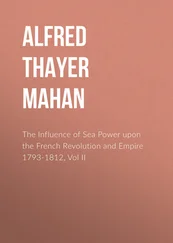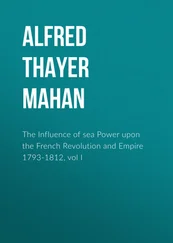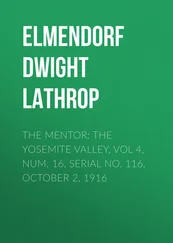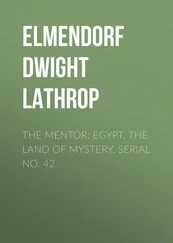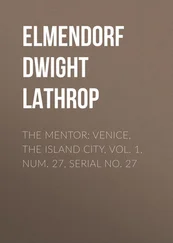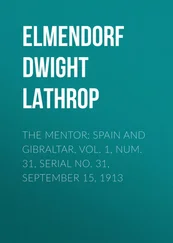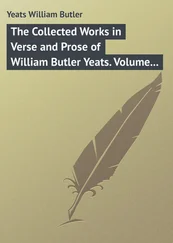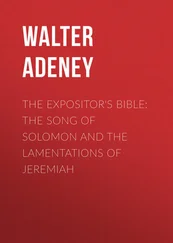Dwight Elmendorf - The Mentor - Scotland, The Land of Song and Scenery, Vol. 1, Num. 10, Serial No. 10, April 21, 1913
Здесь есть возможность читать онлайн «Dwight Elmendorf - The Mentor - Scotland, The Land of Song and Scenery, Vol. 1, Num. 10, Serial No. 10, April 21, 1913» — ознакомительный отрывок электронной книги совершенно бесплатно, а после прочтения отрывка купить полную версию. В некоторых случаях можно слушать аудио, скачать через торрент в формате fb2 и присутствует краткое содержание. Жанр: foreign_antique, foreign_prose, на английском языке. Описание произведения, (предисловие) а так же отзывы посетителей доступны на портале библиотеки ЛибКат.
- Название:The Mentor: Scotland, The Land of Song and Scenery, Vol. 1, Num. 10, Serial No. 10, April 21, 1913
- Автор:
- Жанр:
- Год:неизвестен
- ISBN:нет данных
- Рейтинг книги:5 / 5. Голосов: 1
-
Избранное:Добавить в избранное
- Отзывы:
-
Ваша оценка:
- 100
- 1
- 2
- 3
- 4
- 5
The Mentor: Scotland, The Land of Song and Scenery, Vol. 1, Num. 10, Serial No. 10, April 21, 1913: краткое содержание, описание и аннотация
Предлагаем к чтению аннотацию, описание, краткое содержание или предисловие (зависит от того, что написал сам автор книги «The Mentor: Scotland, The Land of Song and Scenery, Vol. 1, Num. 10, Serial No. 10, April 21, 1913»). Если вы не нашли необходимую информацию о книге — напишите в комментариях, мы постараемся отыскать её.
The Mentor: Scotland, The Land of Song and Scenery, Vol. 1, Num. 10, Serial No. 10, April 21, 1913 — читать онлайн ознакомительный отрывок
Ниже представлен текст книги, разбитый по страницам. Система сохранения места последней прочитанной страницы, позволяет с удобством читать онлайн бесплатно книгу «The Mentor: Scotland, The Land of Song and Scenery, Vol. 1, Num. 10, Serial No. 10, April 21, 1913», без необходимости каждый раз заново искать на чём Вы остановились. Поставьте закладку, и сможете в любой момент перейти на страницу, на которой закончили чтение.
Интервал:
Закладка:
Dwight L. Elmendorf
The Mentor: Scotland, The Land of Song and Scenery, Vol. 1, Num. 10, Serial No. 10, April 21, 1913 / A Trip Around the World with Dwight L. Elmendorf
SCOTLAND
Robert Burns’ Cottage
Few poets singing in dialect become world famous. This is true for the simple reason that a dialect poet is likely to be local – to write of local things – to avoid the universal. But Robert Burns – “poor Burns,” as we think of him – was the exception. Who does not know “Auld Lang Syne” and all that it means? Or who has not said to himself in his own way, “A man’s a man for a’ that?”
Robert Burns could not help but be a poet of the people – the “peasant poet.” He was born close to the soil of Scotland. On January 25, 1759, he opened his eyes in a small cottage about two miles from Ayr, in Scotland. His father was only a small farmer, and Robert got very little education, but lots of hard work.
However, he managed to learn to read, and used to carry his books into the fields with him to snatch a few moments’ reading during the day. At meal times he sat with a spoon in one hand and a book in the other. He liked best the ballads of Scotland – the old songs of the minstrels.
But in 1781 he went to Irvine to learn the trade of a flax-dresser. And it was here that he indulged two habits that clung to him all the rest of his life – drinking and falling in love. For the poet was a boon companion at a feast and a great heartbreaker – but his own heart was broken also many times.
His fortunes fell very low in 1786, and he intended to sail for the West Indies, there to try to better them. But his first volume of poetry proved to be such a great success that he did not go. His poems took the people by storm. Everyone read them. He was invited to Edinburgh, where he became the lion of the hour.
But all this did not bring him in much money. Finally, in 1789 he got a position as excise officer. But as the years went on, and he grew wilder and wilder in his dissipations, friends drew away from him. His only companions were those of the lowest classes.
At last, on July 4, 1796, he knew that he was dying. He wrote on the twelfth to his cousin for a loan of fifty dollars, to save him from passing his last days in jail. He died on the twenty-first of July, 1796.
The Burns Cottage, near Ayr is reverently preserved as a memorial to the poet. Here is the little room where he was born, and here are to be found many mementos associated with his life. This cot, built of clay by Burns’ father, is a shrine for those who love the memory of the “peasant poet.”
SCOTLAND
Ellens Isle
A fierce looking man who had lost his way stood on a beach of snow-white pebbles near a beautiful little glassy lake and blew a loud blast on the bugle which he held in his left hand. And almost immediately he dodged into a nearby thicket of bushes and stood there peering forth at a little skiff that came gliding toward the shore from underneath a gnarled oak tree overhanging the water. The only occupant of the boat was a beautiful young girl, who, after guiding it to a safe landing on the silvery strand, stepped gracefully out on the pebbles.
This was James Fitzjames’ first sight of Ellen, the heroine of Sir Walter Scott’s poem, “The Lady of the Lake,” which has immortalized for all time Loch Katrine in the Trossachs, Scotland. There in the lake sleeps Ellens Isle, the pretty little island on which the girl lived – and last secret fastness of her fierce clan.
In the poem Fitzjames has become separated from his companions, and his bugle call is to summon them to his side from the hunt on which they are engaged. But before they come Fitzjames makes the acquaintance of the girl and goes to Ellens Isle with her – and that’s the beginning of the romance that has made Scott’s poem famous.
All the country round about Loch Katrine has been made famous by Scott. Almost every spot has been the scene of one or more incidents in his novels. High above Callander rise Uamh Var, where the stag was started at the beginning of “The Lady of the Lake,” and Ben Crackie, with the wild Bracklin Fall, within the roar of whose waters the seer of Clan Alpine wrapped himself in the white bull’s hide to dream his dream. Northward from Callander lies the beautiful Pass of Seny, up which Duncraggan’s heir rushed with the Fiery Cross, to thrust it, at the door of the little kirk of St. Bride, into the hands of the new-wed Norman, heir of Armandave. And westward from Callander lie Coilantogle Ford, where James Fitzjames fought Roderick Dhu; Lanrick Mead, the fierce clan’s muster-place; and Duncraggan, scene of the Highland funeral.
The popularity of “The Lady of the Lake” has brought many visitors to Loch Katrine. This beautiful region is visited by hundreds of tourists each year.
SCOTLAND
Melrose Abbey
Among the ruins of Melrose Abbey, ivy covered and deserted, lies buried the heart of Scotland’s greatest king – Robert Bruce. Why is it there, so far away from his grave at Dunfermline? Bannockburn was the greatest achievement of Bruce’s life. This decisive battle was fought on June 24, 1314. Robert Bruce was born in 1274, at a time when Scotland was struggling fiercely to throw off the yoke of England under Edward I. Bruce grew up with the love of freedom strongly implanted in his heart. He was a natural leader.
Finally, his chance came. On March 27, 1306, he had himself crowned king of Scotland; but he was as yet a king without a kingdom. He gathered his supporters together and overran Scotland until only Berwick, Stirling, and Bothwell remained to the English. Edward I had died, and Edward II, a weak and unstable man, was on the British throne.
But even this weakling now saw that unless a strong blow was struck Scotland would be lost. He assembled his army and advanced on Bruce. And then Bruce, by a wonderful exhibition of strategy, rapidity of movement, and personal bravery, so decisively defeated him that the complete rout of the English determined the independence of Scotland and confirmed the title of Bruce.
After peace had been made the new king of Scotland proved himself as able a lawmaker as he was a warrior. But he did not live many years to enjoy his triumph. On June 7, 1329, he died of leprosy, contracted in the hardships of earlier life, and was buried at Dunfermline.
Now comes the story of the “Heart of Bruce.” During his life he made a vow to visit the Holy Sepulcher. But he could not do this; so he begged Douglas to carry his heart there after his death. But the brave Douglas, on the way to the Holy Land stopped off in Spain to help the Spaniards against the Moors and was killed. However, the box containing Bruce’s heart was recovered by Sir William Keith, and at last was brought back to Scotland and found a resting place in Melrose Abbey.
Melrose Abbey is eight hundred years old, and, though battered both by time and the assaults of many hostile armies, is still famous for its architecture. It is situated on the River Tweed, near the little town of Melrose.
Конец ознакомительного фрагмента.
Текст предоставлен ООО «ЛитРес».
Прочитайте эту книгу целиком, купив полную легальную версию на ЛитРес.
Безопасно оплатить книгу можно банковской картой Visa, MasterCard, Maestro, со счета мобильного телефона, с платежного терминала, в салоне МТС или Связной, через PayPal, WebMoney, Яндекс.Деньги, QIWI Кошелек, бонусными картами или другим удобным Вам способом.
Интервал:
Закладка:
Похожие книги на «The Mentor: Scotland, The Land of Song and Scenery, Vol. 1, Num. 10, Serial No. 10, April 21, 1913»
Представляем Вашему вниманию похожие книги на «The Mentor: Scotland, The Land of Song and Scenery, Vol. 1, Num. 10, Serial No. 10, April 21, 1913» списком для выбора. Мы отобрали схожую по названию и смыслу литературу в надежде предоставить читателям больше вариантов отыскать новые, интересные, ещё непрочитанные произведения.
Обсуждение, отзывы о книге «The Mentor: Scotland, The Land of Song and Scenery, Vol. 1, Num. 10, Serial No. 10, April 21, 1913» и просто собственные мнения читателей. Оставьте ваши комментарии, напишите, что Вы думаете о произведении, его смысле или главных героях. Укажите что конкретно понравилось, а что нет, и почему Вы так считаете.


